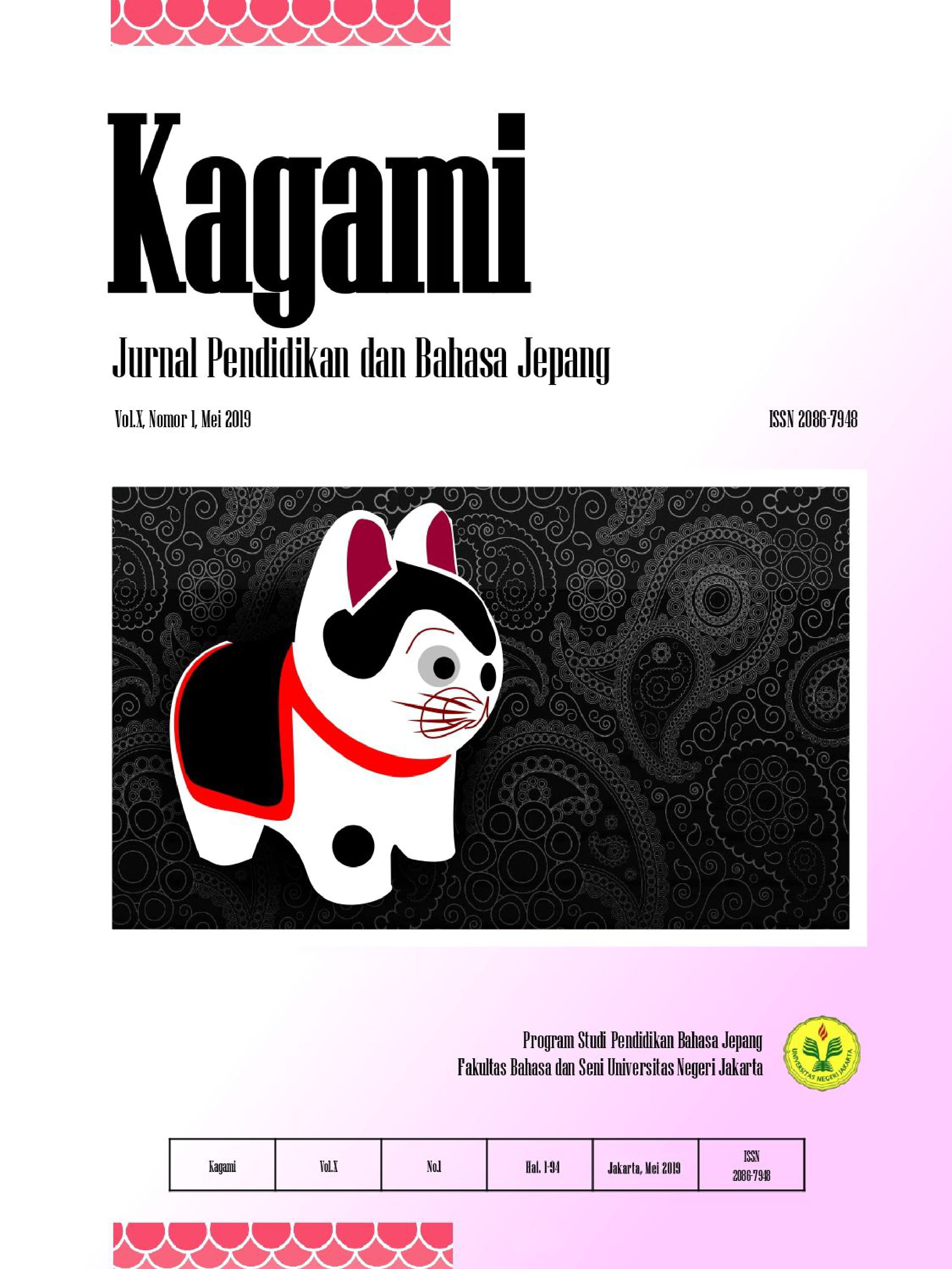STRUKTUR PENGUNGKAPAN MODALITAS AJAKAN DALAM BAHASA JEPANG
Keywords:
shiyou, shika, shinaikaAbstract
Expression in invitation modality in Japanese are appeared by what shown among verb "shiyou, shiyouka, and shinaika". Data used in Japanese is sentences in invitation form in novel which were analyzed based on the theory of modality. The result obtained, in invitation sentence structure characterized by the presence or absence of occurrence personal pronouns in Japanese as indicated by the adverb shiyou, shiyouka, and shinaika that be followed by the first person plural inclusive pronouns.
References
Katou, Akihito et al,. 1990. Nihongo Gaisetsu. Tokyo: Oufuu.
Kudou, Hiroshi et al,. 1999. Nihongo Yousetsu. Tokyo: Hitsujishobou.
Koizumi, Tamotsu. 2002. Gengogaku Nyuumon: Nihongo Kyoushi no Tame. Tokyo: Taishuukanshoten.
Miyajima, Tatsuo dan Nitta Yoshio. 1998. Nihongo Ruigh Hyougen no Bunpou jou): Tokyo: Kurosio Shuppan.
Miyazaki, Kazuhito et al. 2004. Shin Nihongo Bunpou Sensho 4: Modariti. Tokyo: Kurosio.
Nitta, Yoshio. 1999. Nihongo no Modaritii to Ninshou. Tokyo: Hitsuji Shobou.
Nitta, Yoshio et al. 2003. Gendai Nihongo Bunpou 4: Modaritii. Tokyo: Kurosio Shuppan.
_____________________ 2009. Gendai Nihongo Bunpou 7: Danwa; Taigu Hyougen. Tokyo: Kurosio Shuppan.
Sudaryanto. 1993. Metode dan Aneka Teknik Analisi Bahasa. Yogyakarta: Duta Wacana University Press.





